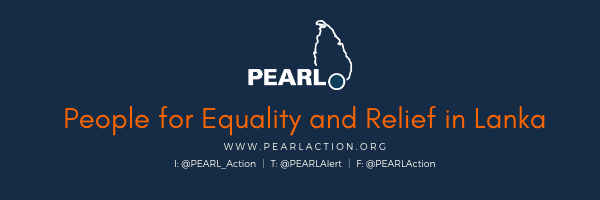 by People for Equality and Relief in Lanka, August 12, 2019
by People for Equality and Relief in Lanka, August 12, 2019
This year marked 36 years since the 1983 riots or Black July pogroms. Armed with voter registration lists, government-sponsored anti-Tamil pogroms killed at least 3,000 Tamil civilians, destroyed 5,000 shops, 8,000 homes, and displaced 150,000 Tamils. It also prompted the first large exodus of Tamil people: 500,000 of them fled the island.
Black July contained all the hallmarks of genocide. In commemoration of the pogroms, PEARL released various media that attempted to historicize the violence while honouring stolen Tamil life. The following is a collection of our efforts to remember the massacre, redefine our history, and uncover the truth.
Understanding Black July As Premeditated
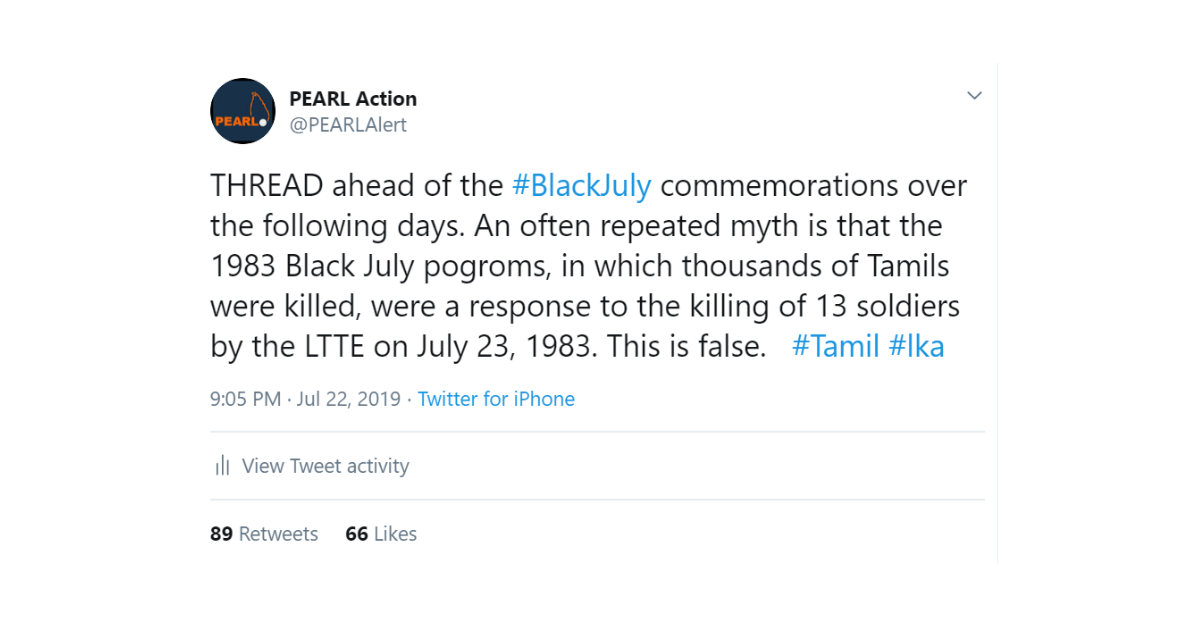
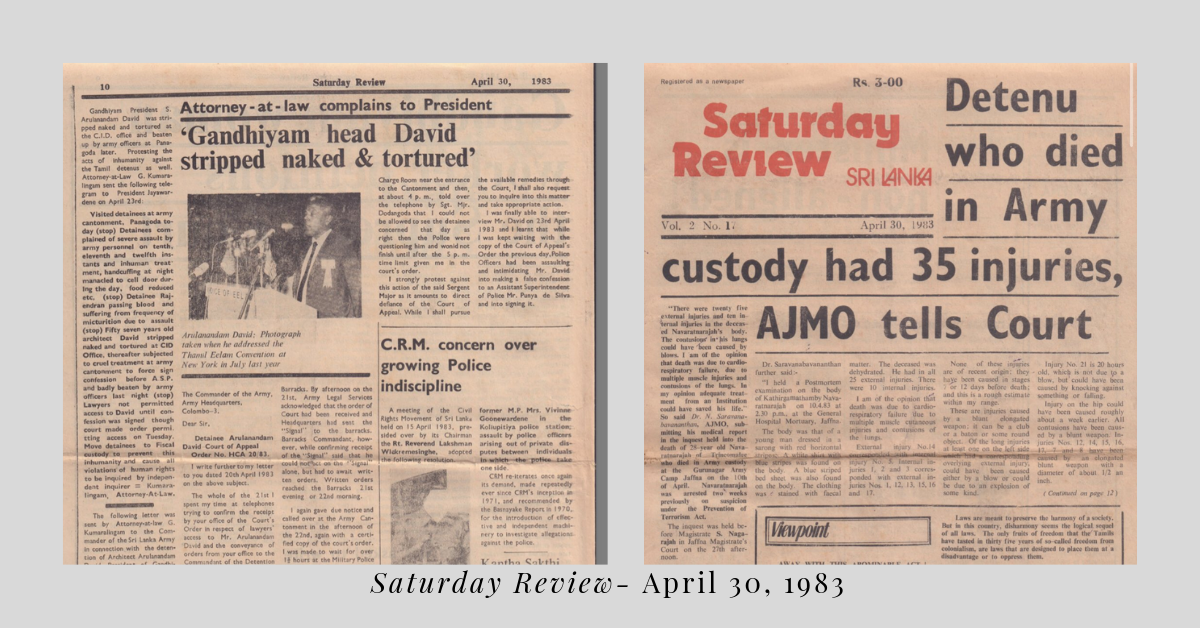
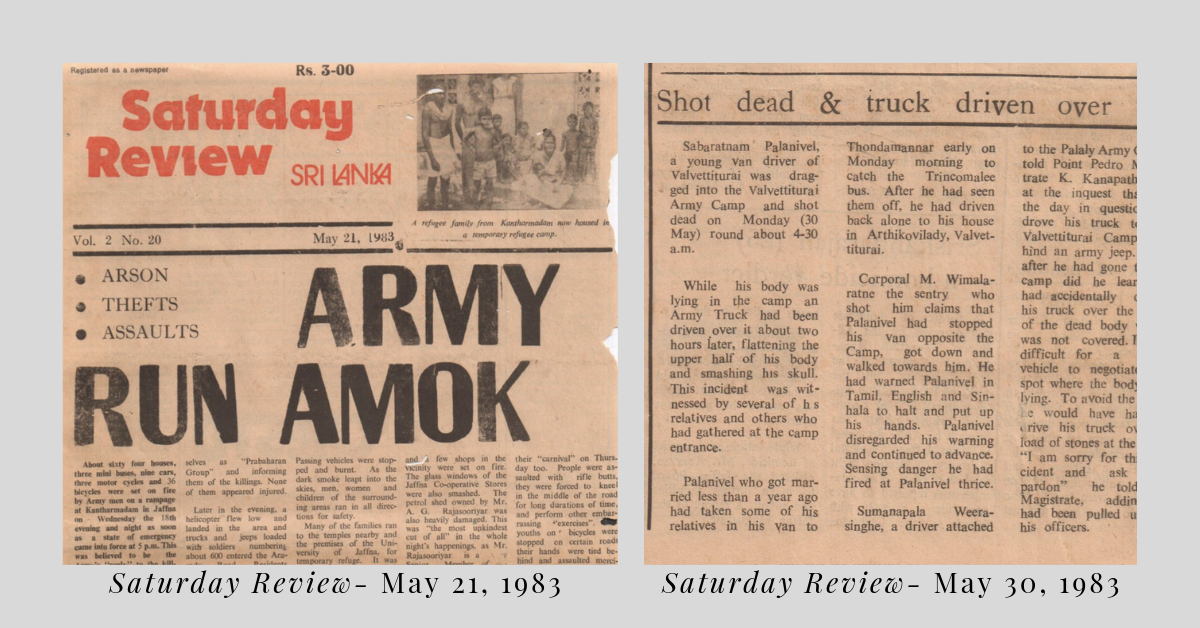
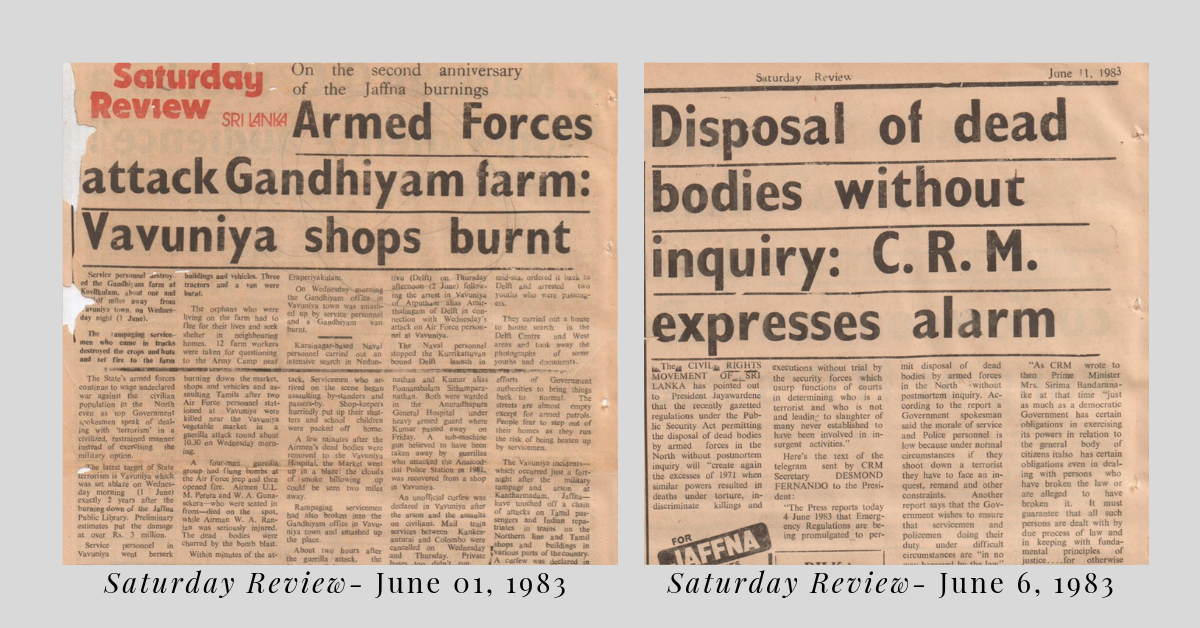
Understanding Black July as Widespread
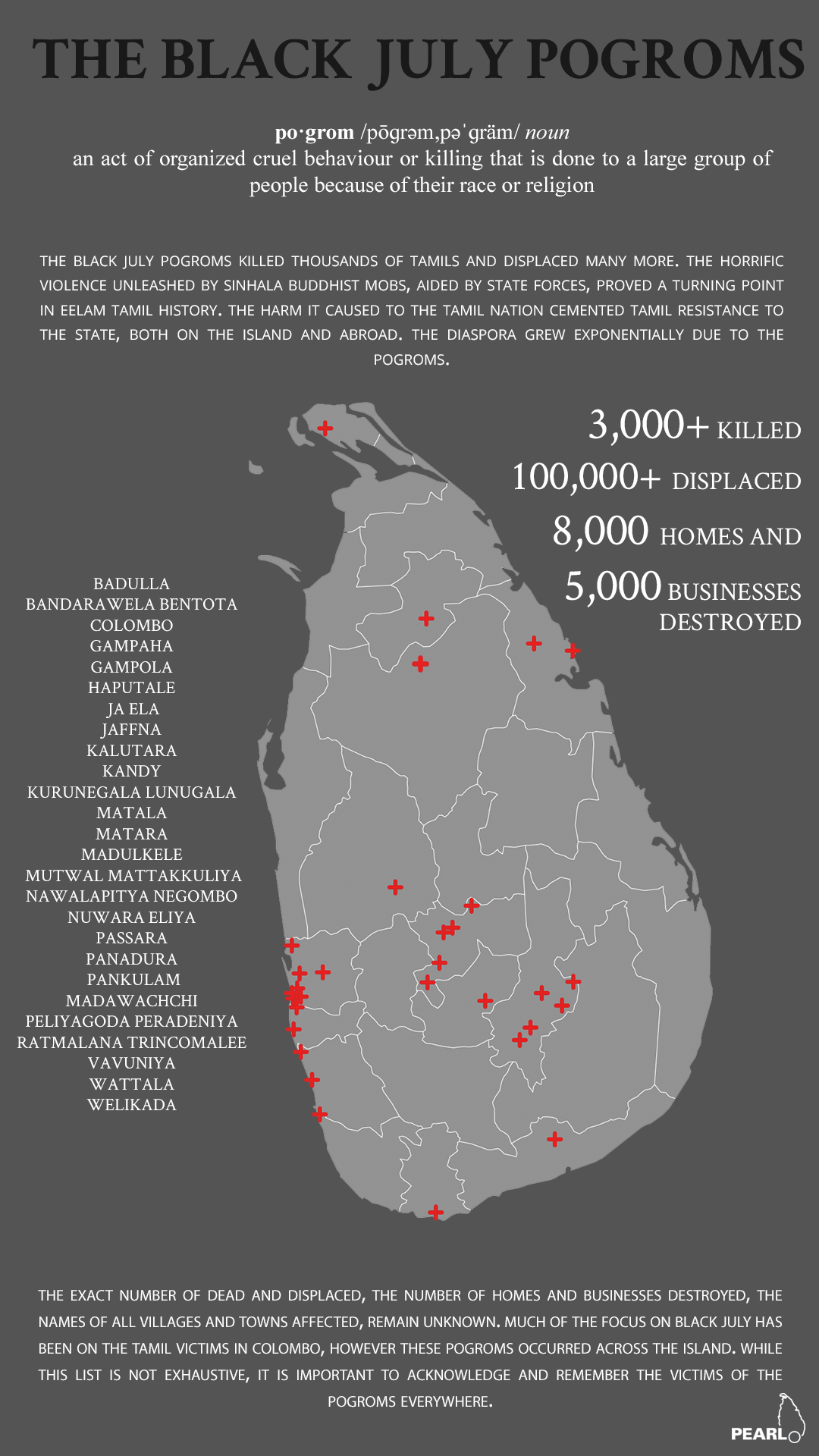
Understanding Black July As A Genocide
On July 23, we published an infographic that showed the Black July pogroms to possess all the characteristics of genocide according to the legal definition provided by the UN. This compliments the infographic we created for the 2009 genocide of Tamils and was similarly used to encourage people to sign our petition demanding formal Tamil genocide recognition and criminal justice from the UN.
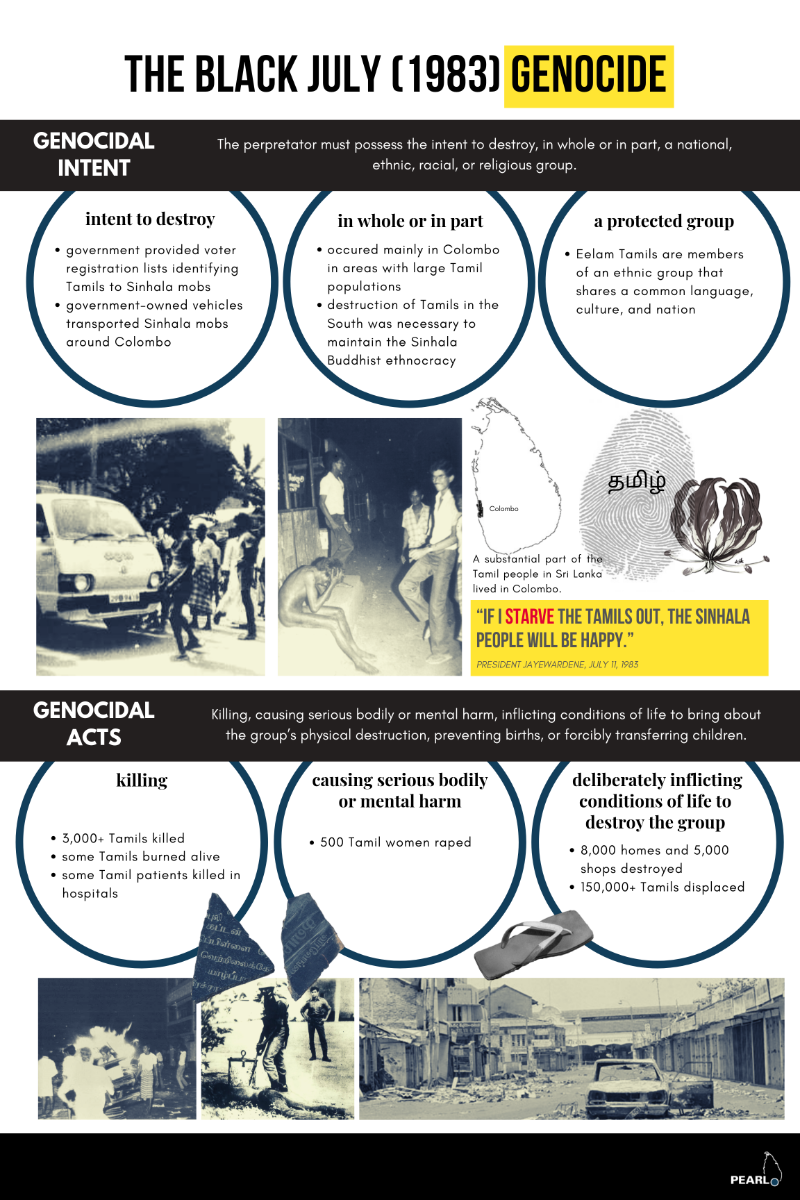
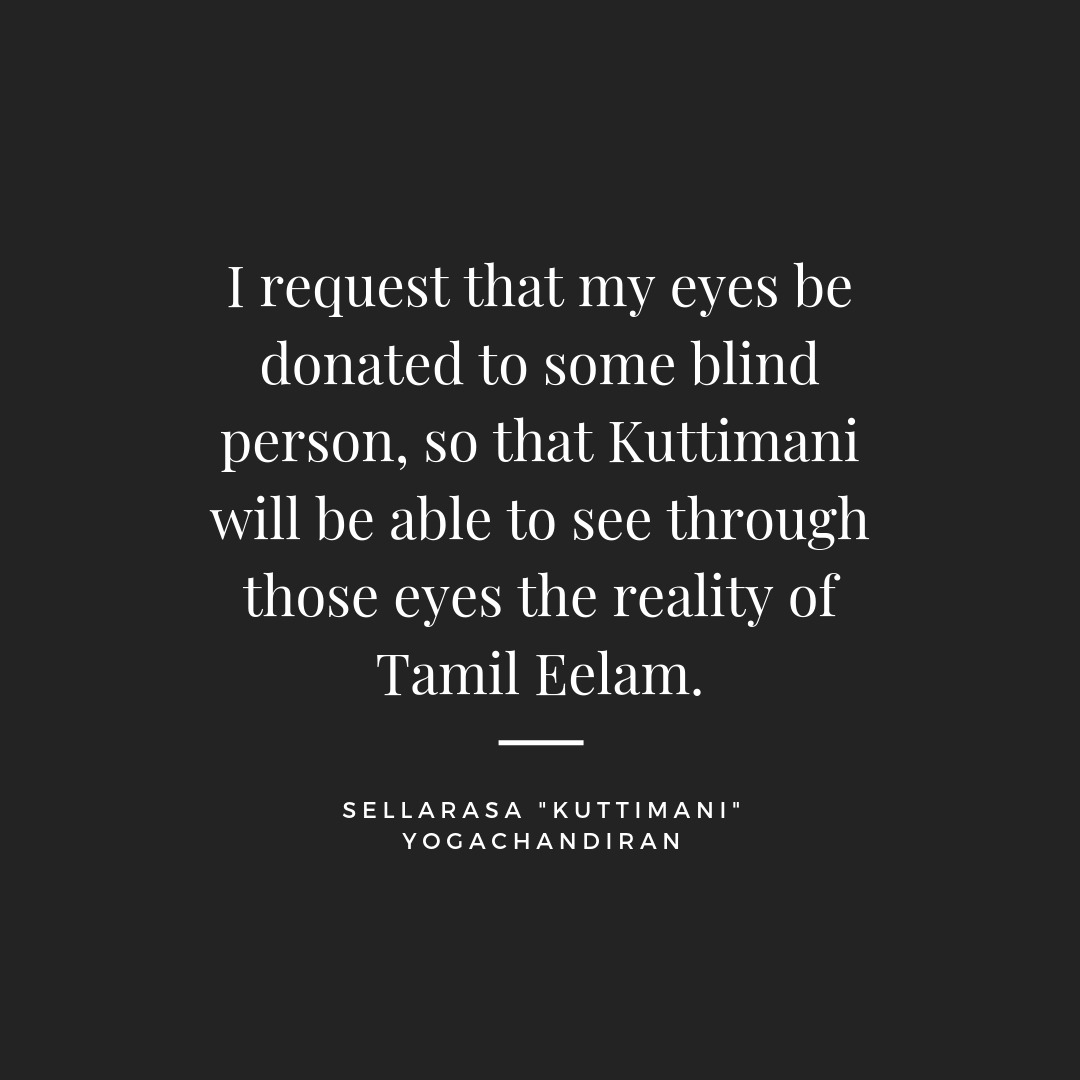
Remembering The Welikada Prison Massacre
On July 25, we focused our attention on the Welikada Prison Massacre. During Black July, 53 Tamil political prisoners were violently murdered by Sinhala prisoners under the supervision of Sinhala prison guards. Amongst the dead, was TELO militants, Sellarasa “Kuttimani” Yogachandiran, Ganeshanathan Jeganathan, and N. Thangathurai. Kuttimani and Jeganthan are famously remembered for asking for their eyes to be grafted onto the Tamils who would see the birth of Tamil Eelam. In their torture, they were forced to kneel and their eyes gouged out with iron bars before they were killed.

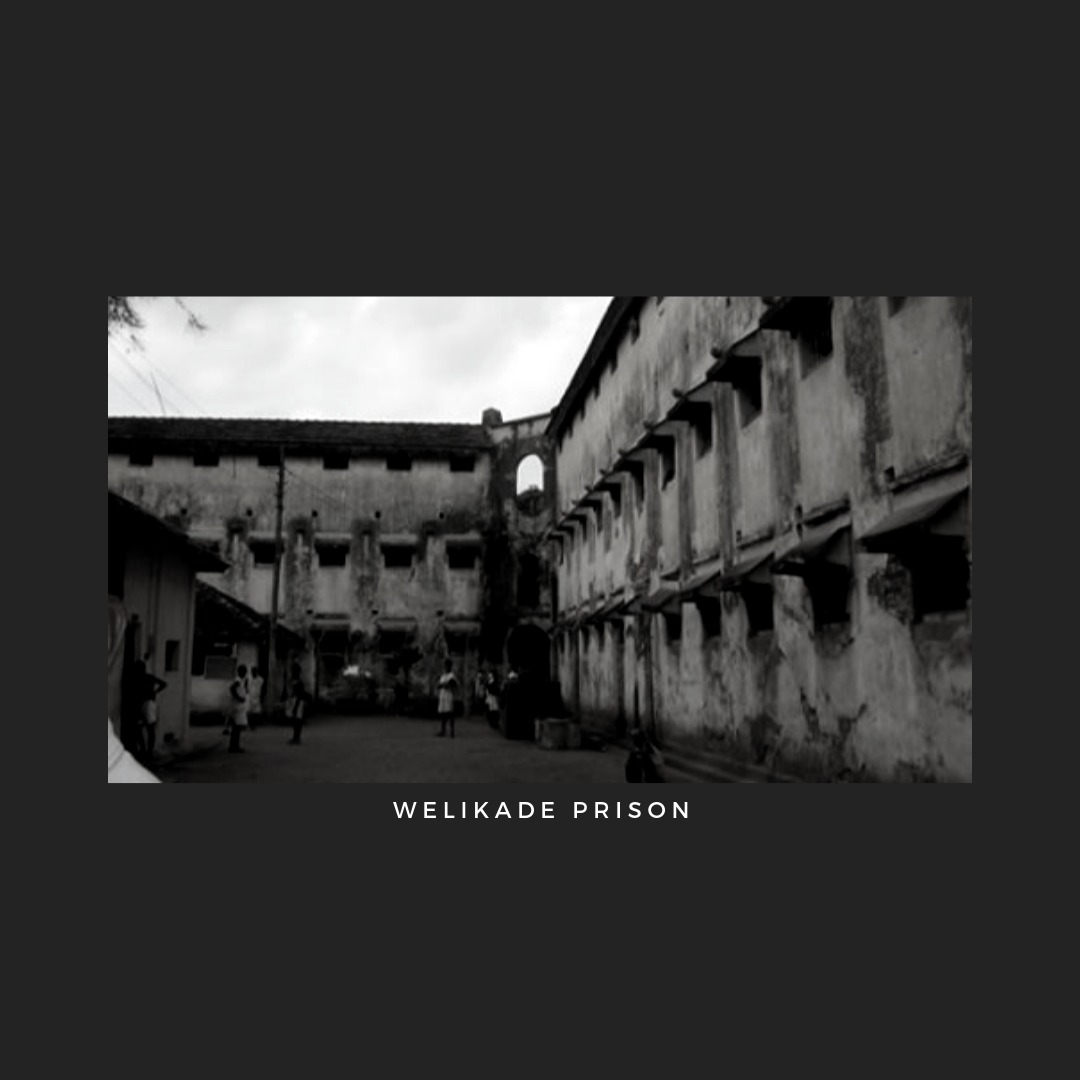
unity
Highlighting Sri Lanka’s Lasting Impunity

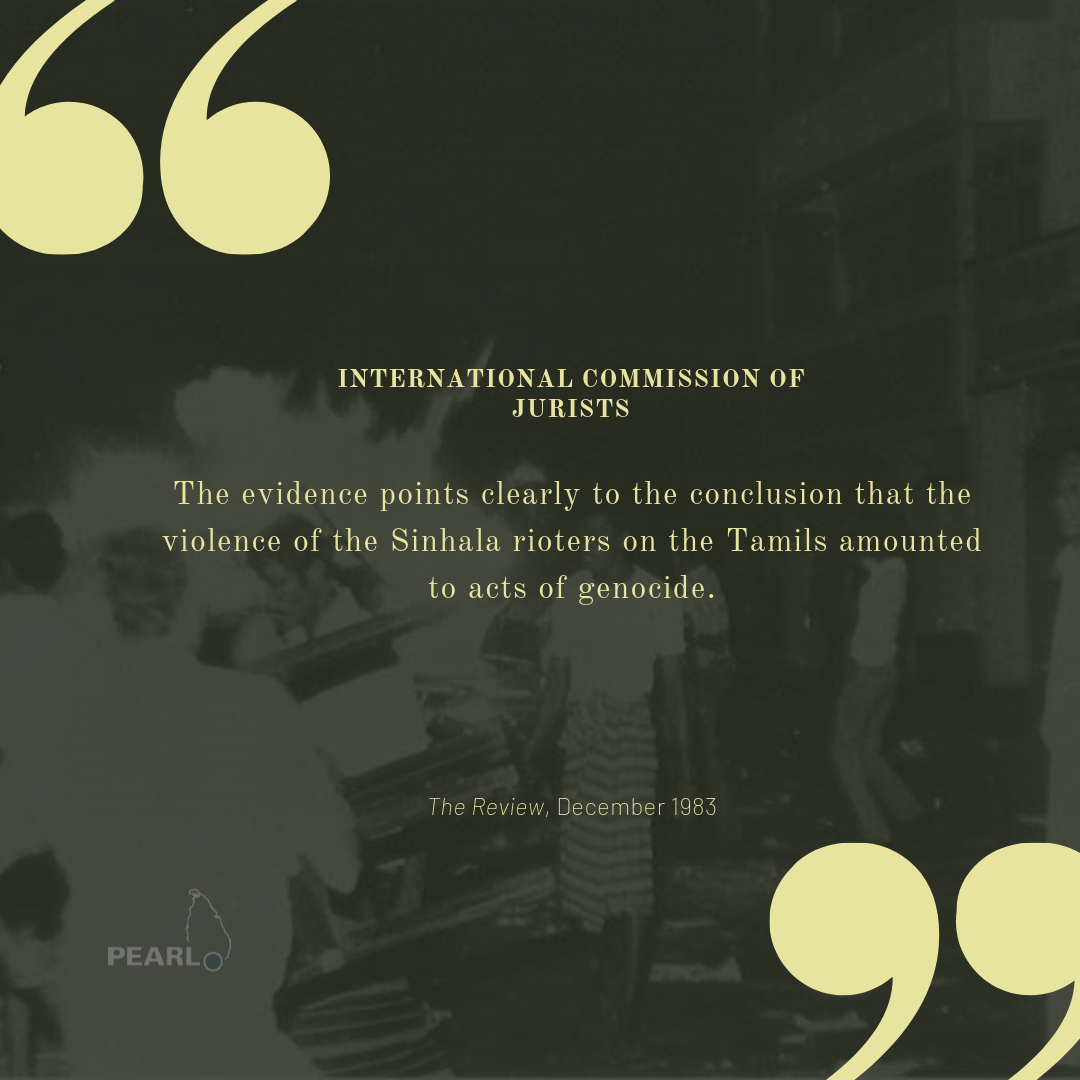
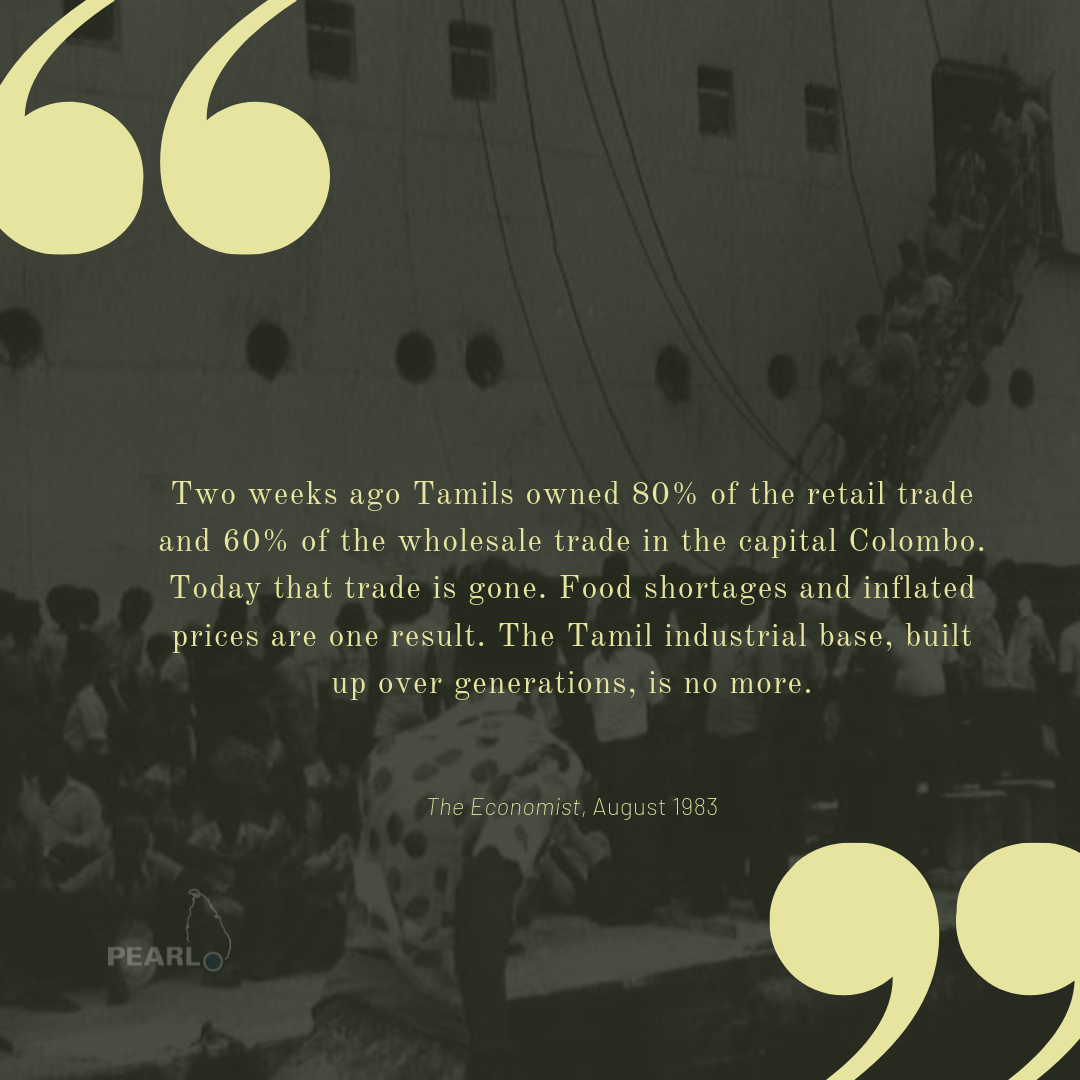
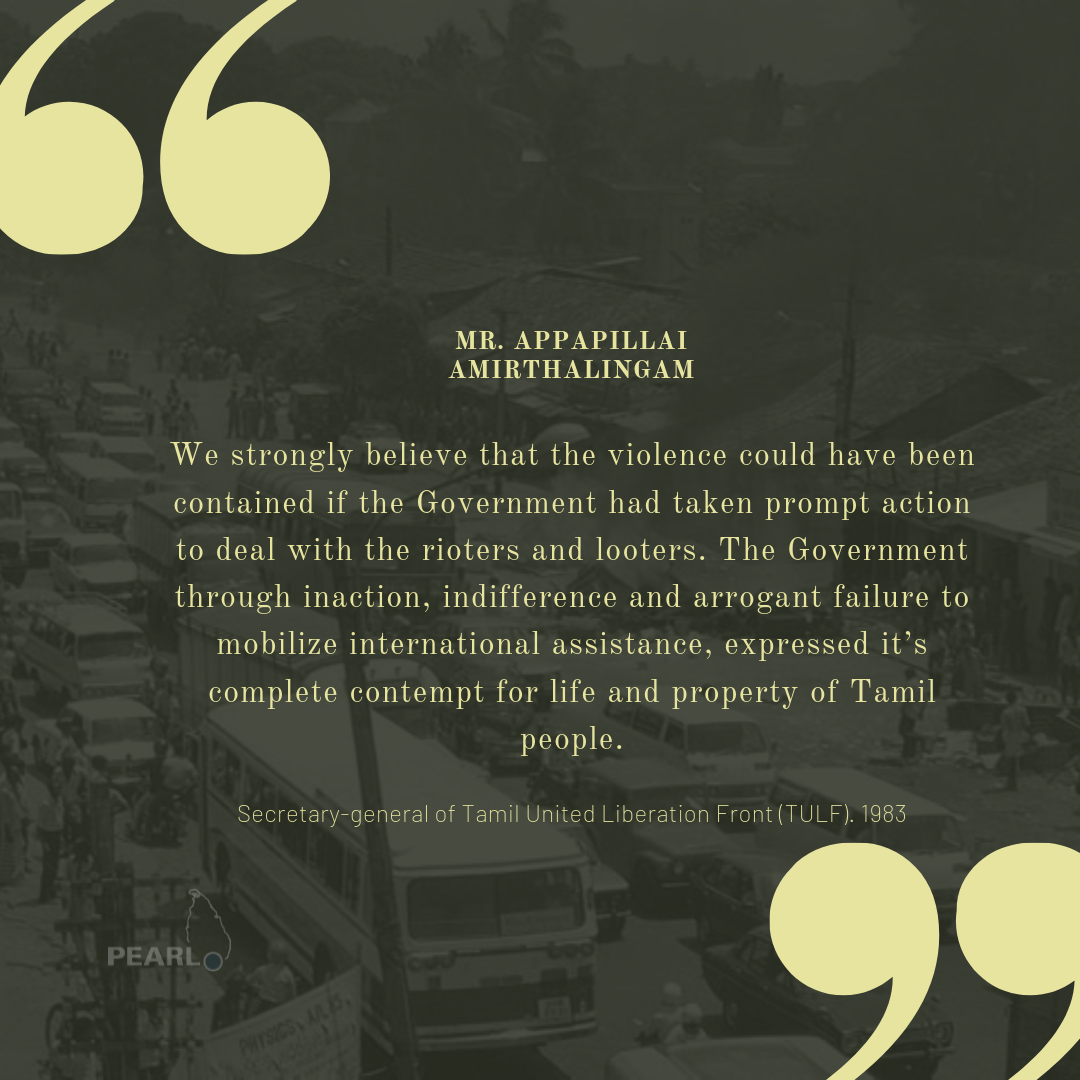
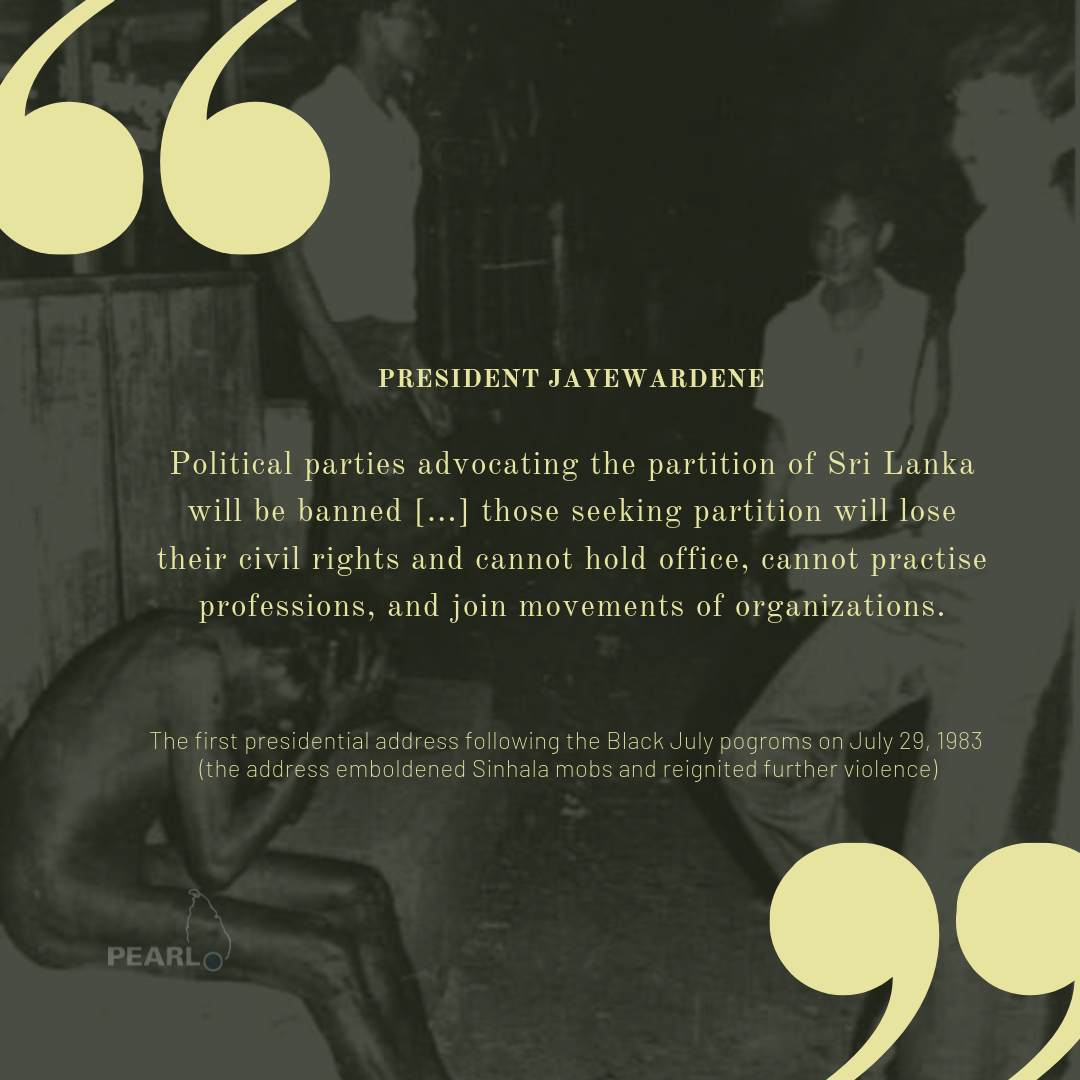
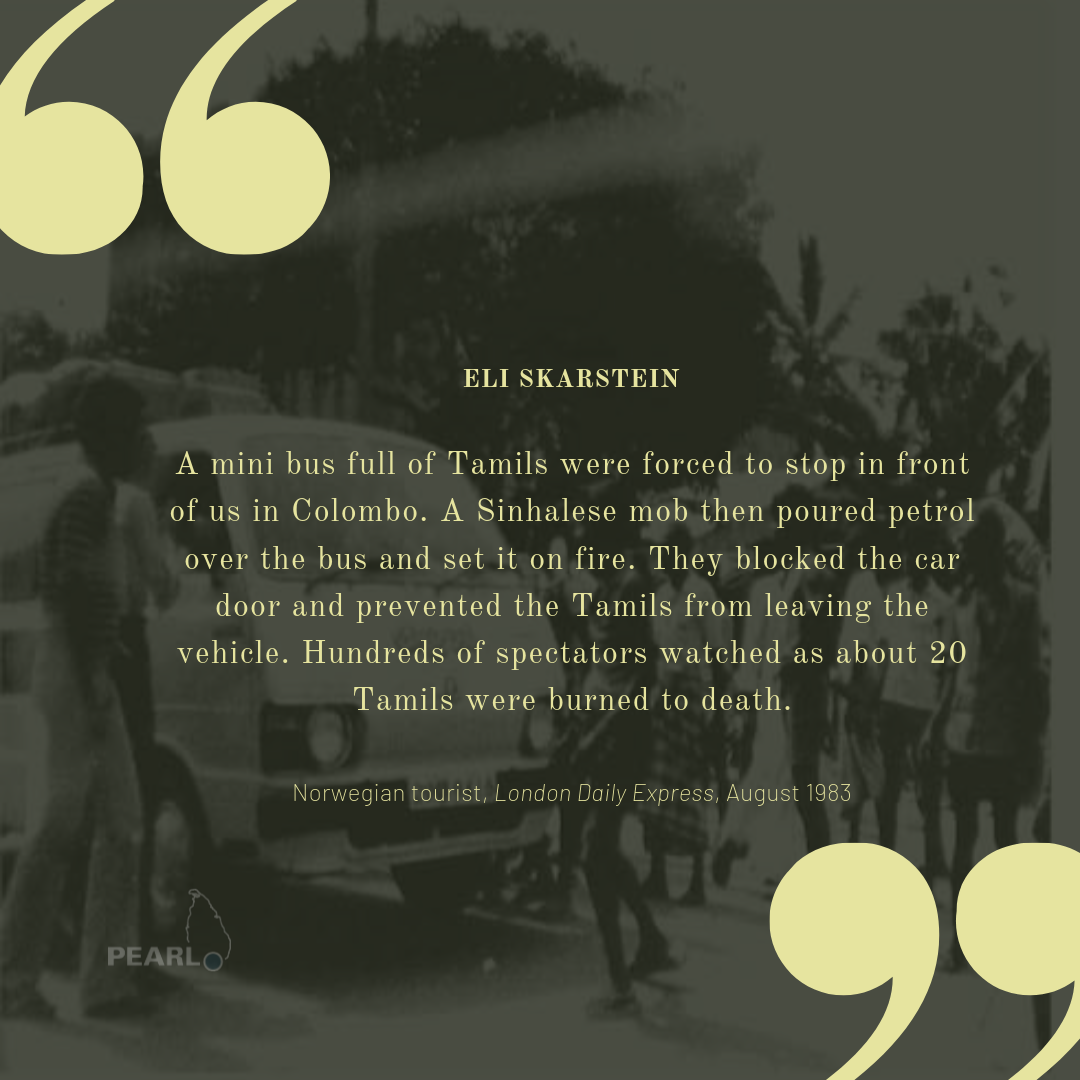
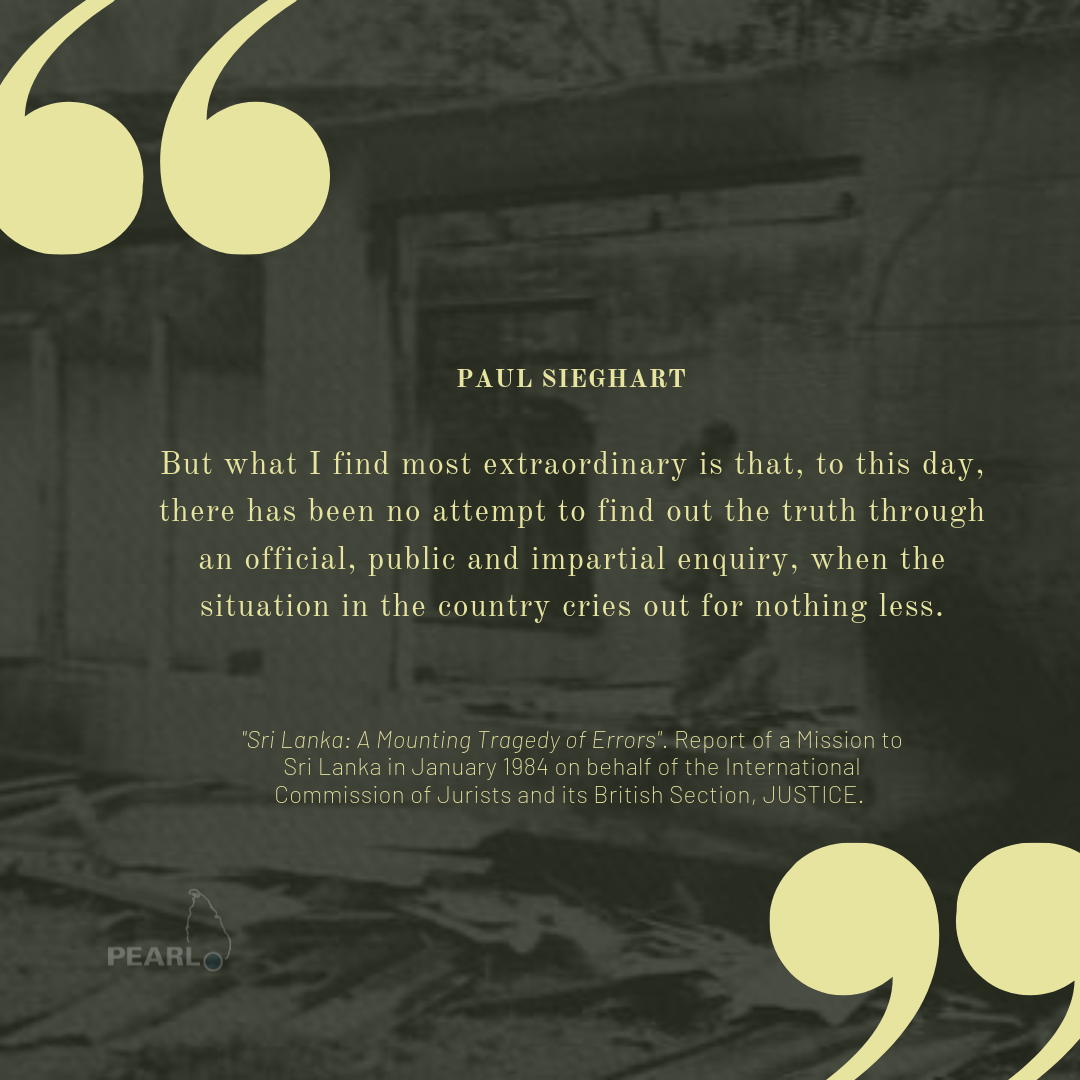
Beneath the Ashes: Remembering Black July and the Violence Before
We published an op-ed on Tamil Guardian detailing the atrocities of Black July and the anti-Tamil violence that gave rise to the pogroms. You can read it here.
“The Black July pogrom carried all the hallmarks of genocide: most notably, mobs were armed with voter registration lists distinguishing Tamils as targets of violence. In this nightmarish rampage against the Tamil people, it is unsurprising that the motivations behind such horror have been reduced into a cause-and-effect narrative. Many of us are familiar with this version: the LTTE killed 13 Sri Lankan soldiers, the next day Sinhala mobs ran amok, supposedly in an outburst of rage in response to the Sinhala deaths. The underserved truth, however, is that the pogrom began before the Tigers’ attack reached public consciousness.”